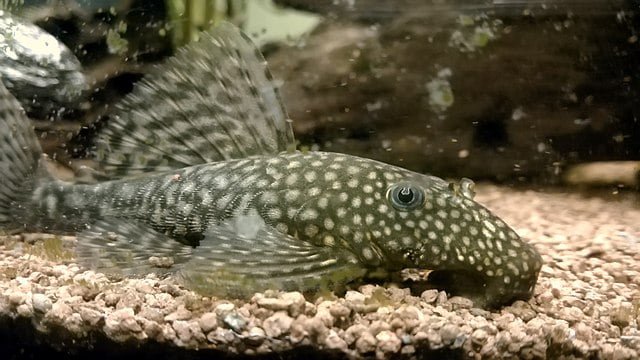
Captive breeding of aquatic species, such as the gilthead seabream (Sparus aurata), is essential for aquaculture. However, routine handling procedures, such as feeding, catching and tank cleaning, can cause significant stress to these animals. The welfare of fish, especially of breeders who spend long periods in captivity, is crucial to ensure the sustainability of the industry.
Scientists from the FishEthoGroup Association (Portugal), the Centro de Ciências do Mar (Portugal), IMEDEA (CSIC/UIB) – Institut Mediterrani d’Estudis Avançats (Spain), Univ Montpellier (Portugal), IPMA – Instituto Português do Mar e da Atmosfera, and S2QUA – Collaborative Laboratory Association for a Sustainable and Smart Aquaculture investigated the impact of environmental enrichment on the stress response of gilthead seabream broodstock (Sparus aurata) during routine breeding procedures. They monitored heart rate, a reliable indicator of stress, using surgically implanted bio-loggers.
The Impact of Stress on Breeders
Gilt-head bream are a valuable species in aquaculture, often kept in captivity for several years as breeders. This prolonged captivity can lead to chronic stress, affecting their health and productivity. Stress can manifest in various ways, including:
- Reduced growth
- Poor feed utilization
- Impaired reproduction
- Weakened immune system
- Increased susceptibility to diseases
These consequences can significantly impact the economic performance of aquaculture businesses.
Environmental Enrichment as a Solution
Environmental enrichment (EE) has proven to be an effective tool for improving the welfare of animals in captivity. By providing physical and mental stimuli, EE can reduce stress levels, increase activity, and enhance natural behavior.
Environmental enrichment introduces complexity and stimulation into the captive environment, mimicking aspects of their natural habitat. There are different types of environmental enrichment:
- Sensory: Stimulates sight, smell, taste, touch, and hearing.
- Occupational: Provides activities to keep the fish busy and prevent boredom.
- Social: Encourages healthy social interactions.
- Dietary: Offers various types of food and feeding strategies to promote foraging behavior.
- Physical: Increases the complexity of the breeding environment with structures, objects, or modifications.
Previous research on various fish species has demonstrated the benefits of EE in reducing stress.
Heart Rate: Revealing the Stress Response
Traditionally, cortisol levels were used to assess fish stress. However, this method has limitations:
Stay Always Informed
Join our communities to instantly receive the most important news, reports, and analysis from the aquaculture industry.
- It involves handling and anesthetizing the fish, which can influence the results.
- Cortisol can also increase with positive stimuli.
- Collection procedures can induce stress themselves.
Heart rate monitoring offers a more reliable and continuous alternative. Bio-loggers implanted in the fish record heart rate throughout the day, even during stress events. This allows researchers to observe immediate and recovery responses to stressors.
Study on Gilt-head Bream and Environmental Enrichment
The study focused on evaluating the effects of environmental enrichment on the stress experienced by gilt-head bream during routine handling procedures. Researchers implanted heart rate tracking devices in the fish to measure their heart rate, a key indicator of stress.
The results were clear: fish housed in tanks with enrichment structures showed significantly lower stress levels during handling tasks compared to those in tanks without enrichment. Additionally, enriched fish recovered more quickly from stressful situations.
Implications for Gilt-head Bream Aquaculture
This study demonstrates the positive impact of environmental enrichment on the welfare of gilt-head bream and suggests it should be a standard practice in the aquaculture of this species. By reducing stress, EE can improve fish health, growth, and reproduction, leading to greater efficiency and profitability for producers.
Conclusion
Investing in environmental enrichment is an investment in animal welfare and the sustainability of aquaculture. By providing fish with a more stimulating and less stressful environment, producers can improve the quality of life for their animals while also increasing the efficiency of their operations.
The study was funded by FCT-Foundation for Science and Technology and the DIVERSIAQUA II project.
Contact
María J. Cabrera-Álvarez
FishEthoGroup Association, Olhão, Portugal.
Email: maria@fishethogroup.net
Reference (open access
Cabrera-Álvarez, M. J., Arechavala-Lopez, P., Mignucci, A., Oliveira, A. R., Soares, F., & Saraiva, J. L. (2024). Environmental enrichment reduces the effects of husbandry stressors in gilthead seabream broodstock. Aquaculture Reports, 37, 102256. https://doi.org/10.1016/j.aqrep.2024.102256
Editor at the digital magazine AquaHoy. He holds a degree in Aquaculture Biology from the National University of Santa (UNS) and a Master’s degree in Science and Innovation Management from the Polytechnic University of Valencia, with postgraduate diplomas in Business Innovation and Innovation Management. He possesses extensive experience in the aquaculture and fisheries sector, having led the Fisheries Innovation Unit of the National Program for Innovation in Fisheries and Aquaculture (PNIPA). He has served as a senior consultant in technology watch, an innovation project formulator and advisor, and a lecturer at UNS. He is a member of the Peruvian College of Biologists and was recognized by the World Aquaculture Society (WAS) in 2016 for his contribution to aquaculture.



